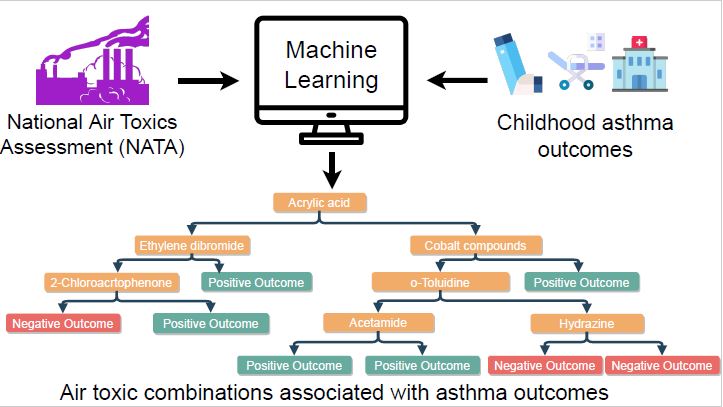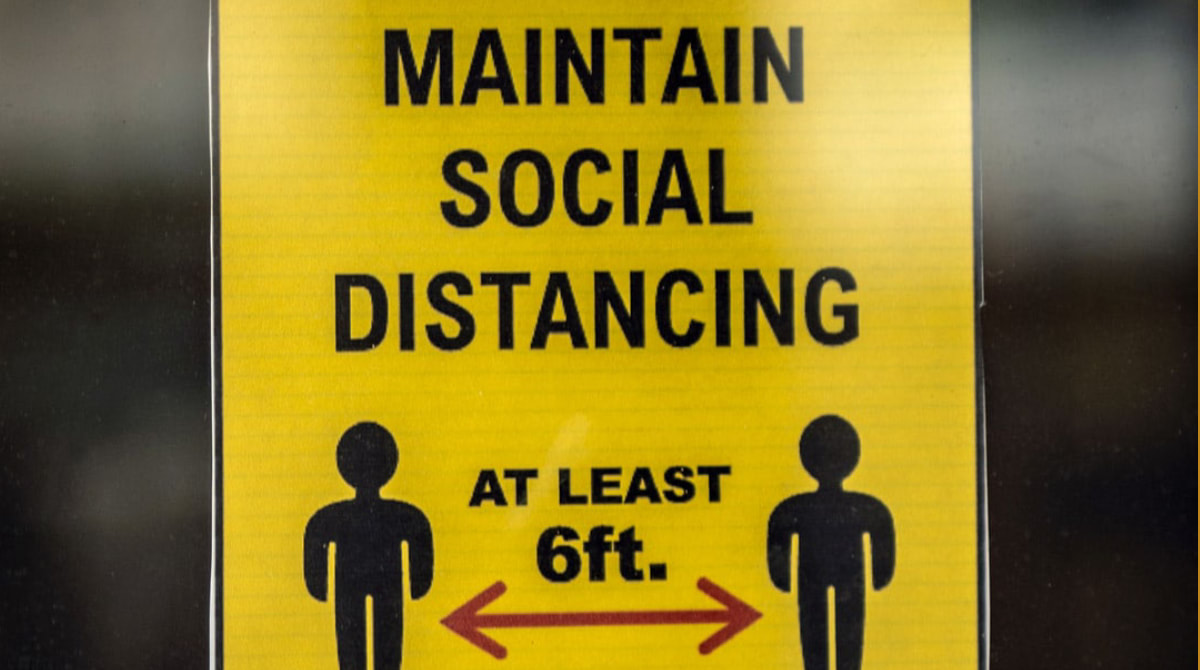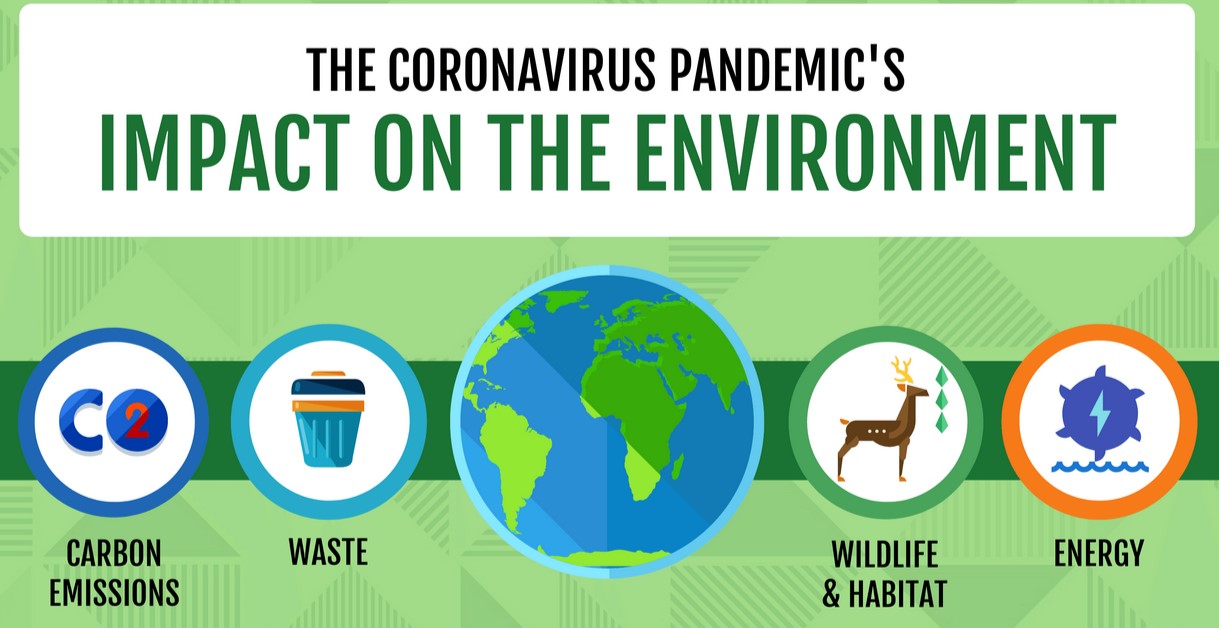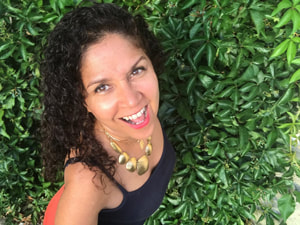|
Idris MY, Korin M, Araya F, et al. Including the Public in Public eHealth: The Need for Community Participation in the Development of State-Sponsored COVID-19-Related Mobile Apps. JMIR Mhealth and Uhealth. 2022 Mar;10(3):e30872. DOI: 10.2196/30872. PMID: 35113793. The COVID-19 epidemic has swamped healthcare systems globally, especially in communities of color with high prevalence of pre-existing conditions. Many state governments and healthcare organizations responded by expanding telemedicine capabilities and developing illness tracking smartphone apps. Based on our observations, many state-sponsored eHealth technologies did not involve community participation, thereby contributing to the growing digital health inequities. We propose that as the use of eHealth tools grows, more emphasis be paid to their equitable distribution, accessibility, and use. We offer our experience engaging in a Community Advisory Board working on the dissemination of the COVID Alert NY mobile app to show the relevance of public participation in app development. We also offer suggestions for involving community members in the app development process. We argue that involving communities in the app creation process enhances buy-in, trust, and utilization of digital technology in communities where it is most needed.
0 Comments
CITATION:
Araya F, Stingone JA, Claudio L. Inequalities in exposure to ambient air neurotoxicants and disparities in markers of neurodevelopment in children by maternal nativity status. Int J. Environ Res Public Health 2021, 18 (14) 7512 https://doi.org/10.3390/ijerph18147512 SUMMARY: Exposure to hazardous air pollutants (HAPs) varies greatly amongst populations. Inequities in HAP exposure among groups can lead to disparities in neurodevelopmental outcomes in children. Our study's goal was to see if HAP exposure was influenced by maternal nativity, a demographic characteristic generally disregarded in health disparities research. We also looked at whether unequal HAP exposure levels may affect young children's neurodevelopment. To do this, we used data from the Early Childhood Longitudinal Study-Birth Cohort (ECLS-B), a nationally representative sample of children born in 2001 (n = 4750). Early cognitive development was assessed using Bayley's Short Form–Research Edition (BSF–R), a standardized test often used to assess brain development. We found that participants at age nine months were exposed to ten possibly neurotoxic HAPs in their homes. Using linear regression models, we found that maternal nativity and HAP exposure had a synergistic effect on neurodevelopment. For instance, 32 percent of children born to foreign-born mothers were exposed to high levels of HAPs, compared to 21 percent of children born to U.S.-born moms. One example of a particular HAP was the air pollutant isophorone, a measure of industrial pollution. After adjusting for socioeconomic characteristics, both isophorone exposure and maternal nativity status were linked with worse BSF-R mental scores in children. There was no statistically significant interaction between nativity status and isophorone exposure, but the change in mental scores was higher in children of foreign-born mothers than in children of U.S.-born mothers (0.12, vs. 0.03, p = 0.2). In conclusion, children of foreign-born mothers were more likely than US-born mothers to be exposed to HAPs in the highest levels, showing disparities in pollutant exposure by nativity status within metropolitan populations. Exposures linked to nativity status may harm children's neurodevelopment. In a new study we published this week in The Journal of Clinical Investigation, our multidisciplinary team of computer scientists, physicians, and epidemiologists at the Icahn School of Medicine at Mount Sinai developed a novel machine-learning algorithm. We used this new machine learning method to identify previously unknown mixtures of toxic air pollutants that appear to be linked to poor asthma outcomes in children.
The issue we addressed with this investigation was that most studies assess the toxicity of pollutants one at a time. But in the real world, people are exposed to mixtures of pollutants that cause different health effects. Gaurav Pandey, PhD, Assistant Professor of Genetics and Genomic Sciences and a senior author of the study, said: "Traditionally, for technical reasons, it has been difficult to study the health effects of more than one toxic at a time. We overcame this by tapping into the power of machine learning algorithms." To do this, we examined early exposure to dozens of pollutants to which 151 children with mild to severe asthma were potentially exposed early in their lives, as measured by the Environmental Protection Agency's National Air Toxics Assessment resource. We developed and applied a novel algorithm, named "Data-driven ExposurE Profile (DEEP) Extraction, to determine the possible ways that each pollutant, alone or in combination with others, could explain asthma outcomes in the children. The algorithm development was led by Yan-Chak Li, MPhil, a bioinformatician, and Hsiao-Hsien Leon Hsu, ScD, Assistant Professor of Environmental Medicine and Public Health. We found that some disease cases could be linked to an individual chemical. One example of an individual chemical showing an effect was the ammonia-scented waterproofing agent trimethylamine, which raised the chances that a child with asthma would spend a night in the hospital. Other pollutants could act alone or in mixtures. One example was acrylic acid, a chemical used in plastics, coatings, medical products, and detergents. Exposure to acrylic acid raised the chances that a child would need daily medication. Exposure to acrylic acid combined with other chemicals further increased this possibility, and in addition, it boosted the chances of emergency room visits and overnight hospitalizations among the asthmatic children who participated in the study. (See illustration) In all, 34 individual chemicals were found to be linked to poor asthma outcomes. Importantly, some asthma cases appeared to be linked to mixtures of pollutants that had never been associated with asthma. "As a physician who treats children with asthma, I was struck by how many potential air toxics are not on our radar," said Supinda Bunyavanich, MD, MPH, MPhil, Professor of Pediatrics, and Genetics and Genomic Sciences, and a senior author of the study. "These results changed my view of the heightened risk some children face." "Our study is an example of how machine learning has the potential to alter medical research," said Dr. Pandey. "It is allowing us to understand how a wide variety of environmental factors—or the exposome—influences our health. In the future, we plan to use DEEP and other computer science techniques to tackle environmental factors associated with other complex disorders." This work was supported by the Department of Genetics and Genomic Sciences at Mount Sinai, Scientific Computing at Icahn Mount Sinai, and the National Institutes of Health (AI118833, HG011407, HL147328, OD023337, and ES023515). Article Citation: Li, Y.C., Hsu, H.H.L., Chun Y, Chiu PH, Arditi Z, Claudio L, Pandey G, Bunyavanich S. Machine learning-driven identification of early-life air toxic combinations associated with childhood asthma outcomes. Journal of Clinical Investigation, October 5, 2021, DOI: 10.1172/JCI152088
Two-thirds of liquid lipsticks, two-thirds of foundations, and three-fourths of waterproof mascaras contained high levels of fluorine, one of these chemicals. In addition, another in-depth look of 29 products found that 28 of the products in which PFAS were identified did not disclose the chemicals on their product labels. The findings were published as a group of senators introduced a bill to ban the use of PFAS in personal care products. Though the Food and Drug Administration (FDA) regulates cosmetic products, the agency does not evaluate or approve the ingredients for safety. In addition, the FDATrusted Source technically requires cosmetic companies to disclose all ingredients used in their products. However, many loopholes have allowed companies to not disclose all of the ingredients included on the product labels. In the United States, “Cosmetics and personal care products are not closely regulated to ensure that they do not contain toxic chemicals,” said Luz Claudio, PhD, a professor of environmental medicine and public health at the Icahn School of Medicine at Mount Sinai. To read the full article, click HERE. Juan A. Ortega-Garcia, Manuel Ruiz-Marin, Alberto Carceles-Alvarez, Ferran Campillo i Lopez, Luz Claudio. Environmental Research 189 (2020) 109957.
At one point during the global novel coronavirus pandemic, Spain was the epicenter of infection. Yet, not all regions of the country had the same rates of hospital emergency visits during this time. The region of Murcia flattened the curve quickly while other regions of the country had overwhelmed hospital capacity. This was attributed to a robust, community-based, social media campaign promoting tele-medicine and social distancing within health care centers. In this rapid communication, we describe the actions taken in Murcia that may have contributed to a more favorable outcome as compared to other regions. One important action was the coalition of activists, community leaders, physicians and researchers working as amplifiers of an educational campaign using a variety of social media and outreach strategies. A successful internship can be the key to a thriving and fulfilling career. However, there are several things you need to consider before accepting any offers.
In this article, 7 experts were asked how should candidates accept an internship. My response: A good acceptance letter from an intern should be informative and appreciative Informative, because some internship programs may accept a number of interns at the same time. Make sure to include a summary of your skills in your letter. State very clearly in bulleted form what skills you will bring to the internship and how this makes you a great candidate. If you have a good idea of the project or topic of the internship project that you’d like to do, this will also demonstrate that you have done your homework regarding the projects that will be meaningful for the organization that is offering you the internship. Finally, the acceptance letter should be appreciative. Don’t sound like you had taken it for granted that you would be accepted to the internship. Make sure to state that you appreciate the opportunity and that you are committed to doing a great job. Although nothing is the same after the pandemic, including summer internships for students, cancellations are lower than expected as many programs move online. But some question the value of a virtual job experience.
"At the Icahn School of Medicine at Mount Sinai in New York, internship offerings have been expanded by reallocating travel and housing funding. Professor Luz Claudio directs several medical and research internship programs funded by the National Institutes of Health. This year, the International Exchange Program for Minority Students received 400 applications for 10 positions, she said. “There were a lot of really good applicants in that pool,” Claudio said. “I want to get more interns, not less.” Her internships are pivotal for students because they are paid, can provide required credits and allow publication of journal articles, which pave the way to graduate programs." In these infographics and accompanying article, we gathered information from primary and secondary sources to summarize the effects of the COVID-19 pandemic and quarantine on different aspects of the environment. We found that mother nature earned some points, but lost on others. For example, here in New York, Columbia University measured a 50% reduction in carbon monoxide emissions. But, medical waste quadrupled due to the increased use of disposable PPE and other contaminated biomedical solid waste.
In the article, I was cited as follows: "One of the things that we can learn from the pandemic’s effects on the environment is that we CAN actually have an impact if there were a global effort to do so. It is inspiring how in cities that had extreme levels of air pollution, from Los Angeles to New Delhi, people are seeing the difference that cleaner air can make to quality of life if we could reduce the number of cars and emissions from polluting industries. Another lesson will be the realization of how productive many workers can be while working from home when they are given the proper tools. Many companies will see the value of having at least some workers work from home, reducing the need for commuting and also reducing the office space needed to conduct business." See the full article with the beautiful interactive infographics and the list of sources including other scientists and business leaders who contributed Here. ABSTRACT
Aims In current clinical practice, prenatal alcohol exposure is usually assessed by interviewing the pregnant woman. An alternative method for detecting alcohol use is to measure the biomarker carbohydrate-deficient transferrin (CDT). However, few studies measure CDT during pregnancy. This study examines the utility of CDT biomarker in the screening of alcohol exposure during early pregnancy. Methods A cohort of 91, first-trimester pregnant women assigned to a public reference maternity hospital, was screened using the Green Page (GP) questionnaire, an environmental exposure tool. CDT levels and other biomarkers of alcohol use were measured and compared with questionnaire data. Results About 70% of the mothers in the study consumed alcohol during early pregnancy and 22% met high-risk criteria for prenatal exposure to alcohol. CDT measurement showed a statistically significant area under the receiver operating characteristic curve with a value of 0.70. For a value of 0.95% of CDT, a specificity of 93% was observed. The most significant predictors of CDT were the number of binge drinking episodes, women’s body mass index and European white race. Conclusion Pregnant women with a CDT value >0.95% would be good candidates for the performance of the GP questionnaire during early pregnancy in order to detect potential high-risk pregnancy due to alcohol exposure. Mothers who use beauty products containing chemicals known as parabens during pregnancy may be more likely to have overweight daughters, a small study suggests.
Babies tended to be heavier at birth, and more likely to become overweight by age 8, when mothers used makeup, lotions and other common beauty products containing parabens while pregnant, the study found. One of these chemicals, butylparaben, was associated with excess weight only in girls. Even so, it makes sense for pregnant women to check product labels and steer clear of beauty items containing parabens, said Luz Claudio, an environmental health researcher at the Icahn School of Medicine in New York City who wasn’t involved in the study. “The significance of this finding cannot be underestimated because girls and women typically used more personal care products and cosmetics containing parabens than do boys and men,” Claudio said. “Thus, this effect of early exposure to parabens in females could potentially continue to increase as they grow and use even more of these products, potentially affecting the next generation of girls.” Read the full article at: Reuters, WebMD, Medscape Read the original research paper from Nature |
This section will not be visible in live published website. Below are your current settings: Current Number Of Columns are = 1 Expand Posts Area = 1 Gap/Space Between Posts = 8px Blog Post Style = card Use of custom card colors instead of default colors = 1 Blog Post Card Background Color = current color Blog Post Card Shadow Color = current color Blog Post Card Border Color = current color Publish the website and visit your blog page to see the results AuthorDr. Luz Claudio is an environmental health scientist, mother and consultant, originally from Puerto Rico. She is a tenured professor of environmental medicine and public health. Luz recently published her first book: How to Write and Publish a Scientific Paper: The Step-by-Step Guide. Dr. Claudio has internship programs and resources for young scientists. Opinions expressed in this blog are solely her own and may not reflect her employer's views. Categories
All
|
|
Dr. Luz Claudio
[email protected] |
|
Opinions expressed in this website are solely Dr. Luz Claudio's own and may not reflect her employer's views. None of the information on this website should be taken as medical advice.
© COPYRIGHT 2018. ALL RIGHTS RESERVED.




 RSS Feed
RSS Feed 






